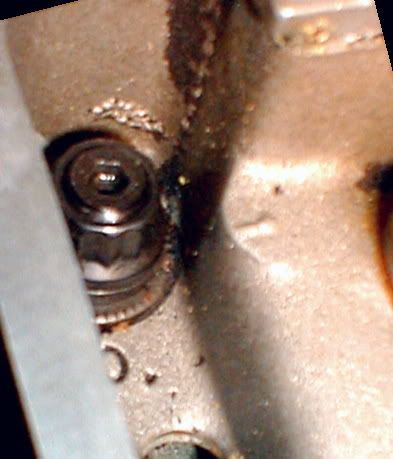122_Canuck wrote:
I've got an OHV set (not with the sexy 12 point nuts, but ARP none the less) and this is one of the mods that the 1800 racer on the weekend listed as useful for the OHV engine...that and filling the block half way with concrete.
While lots will argue to the contrary (at least on other boards), studs are stronger than bolts. On the venerable brickboard people will advise folk to use hardware store grade 8 bolts...
I wonder where Barry got his ARP set, and after part of the summer contacted me for a complete spare set in case they
ever became unavailable in the future? Err, I guess I let it slip, there..

The absolute last thing you want is grade eight or similar, there are no advantages and considerable disadvantages over stock:
Quote:
Some background as to how these studs work
The alloy material is simply superior. Hardware store or bolt-supply specialty-store items may be made of brittle, hard material which likely has great theoretical strength, however if there is even a tiny fraction of misalignment
-through the block threads,
-on the threads of a bolt, or on either end of a stud,
-or the finish and threading of a nut, or bolt-head's underside,
-or on the finish of the washer or contact pad on the cylinder head,
one "side" of the stud will have to absorb all the force, essentially creating a situation where a portion of the fastener cross section is under little load, reducing the effective diameter.
A brittle hard material will also not stretch under torque. While the ARP proprietary material and heat treatment leaves the stud with high measured strength (the material used here is 190 kpsi, 27% better than the well regarded SAE Grade 8 standard, 150kpsi), the material is still left with substantial spring effect. What this does is maintain torque more accurately through expansion and contraction due to heat cycles or gasket residual crush. For example, if the torque creates a theorectical "#10" stretch in an ARP product, then a crush of "1" arising from heating/cooling and stresses working on the casting will leave nearly 90% of the clamping force in effect. If a stiff bolt stretches only a theorectical "#4" under the same torque values, a crush of "1" will mean less than 75% of the clamping force remains.
In addition, the threads of the ARP product allow for the most accurate 360* contact possible. These threads are created with a contour slightly asymetrical top side vs bottom side, and a slightly rounded thread "root" to achieve the best mechanical strength.
On a more practical note, it may be considered obvious that factory fasteners, if in the used state, will have been subjected heating and cooling cycles possibly up into the ten-thousands, and one-or-many torquing cycles of unknown accuracy.
Additionally, as compared to any bolt, you are applying torque via fresh, visible, and fine pitched threads, versus to coarser threads in the block which are likely roughened by corrosion. Fine thread increases clamping force by the approxmiate ratio of the thread pitches: 14:20, or about 40%, for a given torque value. This is why you should never exceed 64-68 ft lbs on oiled threads.
Lastly, when applying torque to a bolt, as the final torque level is approached, the fastener may begin to "hide" or "absorb" torque by acting as a vertical torsion bar.
Barry tried Papcolloy 210 kpsi, had to buy a whole box, and they were worse than rusty stock ones.
The ARP rep used to carry in his briefcase, a 170 kpsi stainless 5/16 stud, coiled tightly like a compressed coil spring around a 3/8" bolt. No cracking, not even hazing hinting at cracking. Every fastener that leaves their plant has that, or better, ductility.
I am not sure why he would have *needed* to fill the block, though he had 93mm bore for a while. I did partially fill my "b26" block, but that was more to do with Aus Richard Prince's difficulty. I figured with a sleeve in the only hole showing any weakness, and the option of several levels and lengths of Mistubishi rods, the only thing it would need is pistons, for it to potentially grow into a 400+ hp turbo in a few years, so it wasn't a complete waste. The complete short block sure is a lot to carry up and down the stairs, and the stairs feel *pretty* close to letting go.

